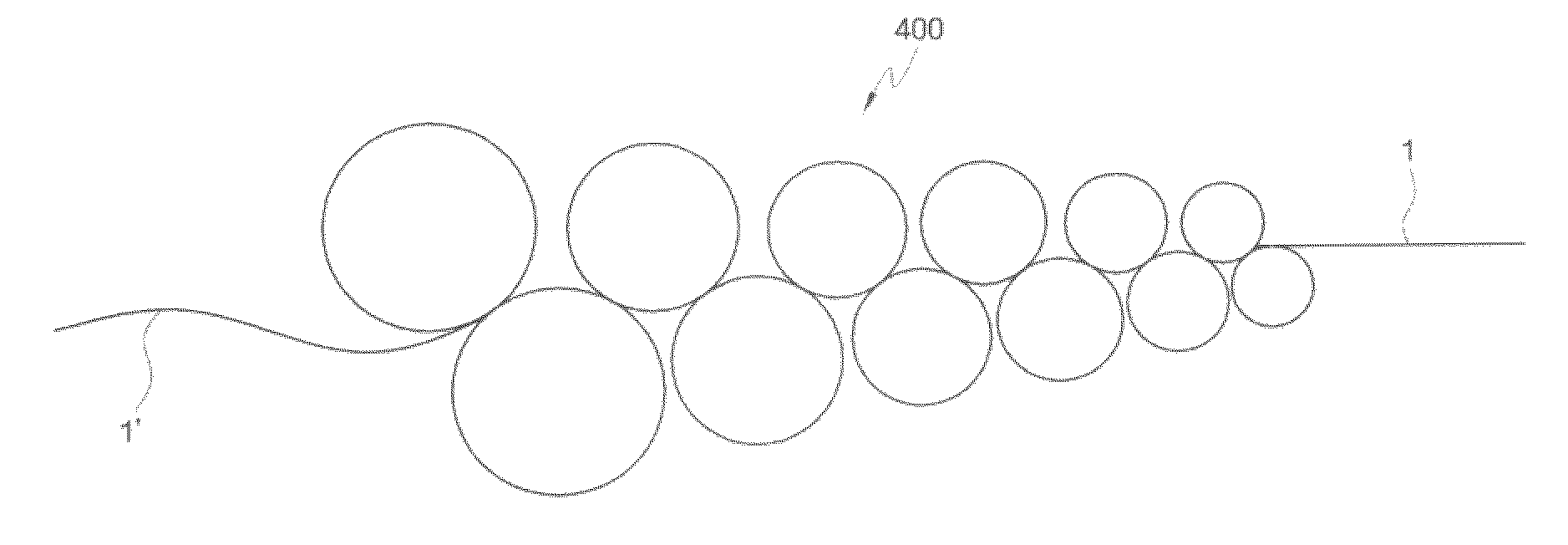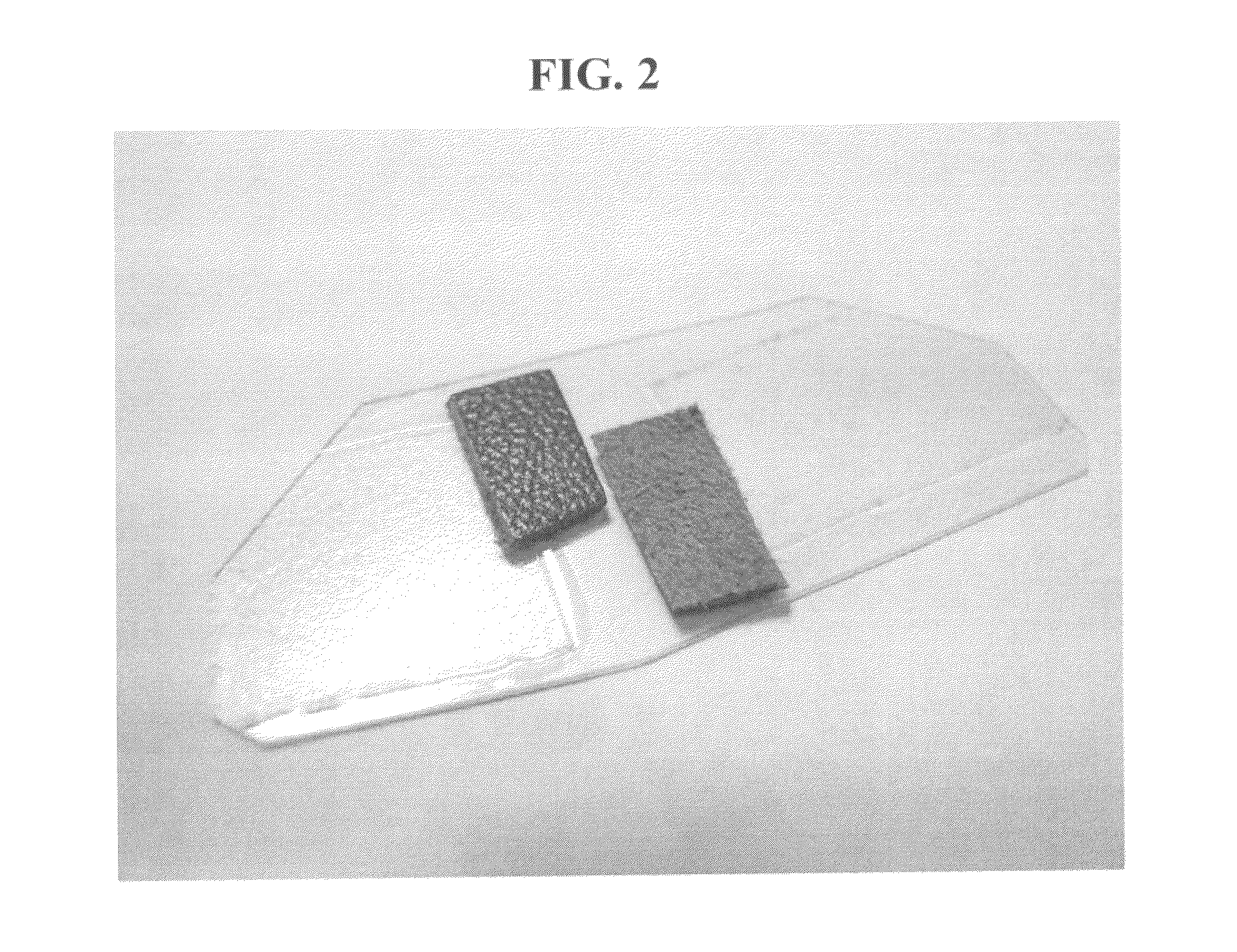Method of duplicating texture pattern on object's surface by NANO imprinting and electroforming and patterned duplication panel using the same
a technology of nano-imprinting and electroforming, applied in the field of duplication of the surface of objects, can solve the problems of inability to realize the surface texture on the nanometer scale, difficult mold manufacturing for use in such duplication, unsuitable mass production, etc., and achieve the effect of convenient industrial use, beautiful and soft texture, and structure and color
- Summary
- Abstract
- Description
- Claims
- Application Information
AI Technical Summary
Benefits of technology
Problems solved by technology
Method used
Image
Examples
experiment example 1
Metal
[0141]Step of Pretreating Object to be Duplicated (S210)
[0142]A copper (Cu) sheet having a surface with a micro pattern was selected as an object to be duplicated, and then was degreased at a temperature of 42° C. for 10 minutes. After degreasing, the copper sheet was washed by spraying pure water of 22° C. three times each for 30 seconds, and then was dried by hot air of 65° C. for 5 minutes.
[0143]Step of Nano-Imprinting the Pretreated Object to Polymer Sheet (S220)
[0144]After a Teflon sheet was seated on a lower template of the nano-imprinting apparatus, the object to be duplicated was put on the Teflon sheet, and then a polymer sheet having a thickness of 5 millimeters was put on the object to be duplicated. After the polymer sheet was seated, an upper template of the nano-imprinting apparatus was closed, and the initial pressure was set to 1 atm so that the object to be duplicated and the polymer sheet were fixed so as not to be moved. A heat plate was primarily heated by a...
experiment example 2
Leather
[0155]Step of Pretreating Object to be Duplicated (S210)
[0156]Leather having a pattern was selected as an object to be duplicated, and then was washed by dried air so as to eliminate dust or impurities from the surface of the leather. After washing, the surface of the leather was evenly sprayed by a silicon releasing agent to apply it onto the whole surface of the leather. After that, it was left in the air for 5 minutes so that the silicon releasing agent was permeated into the surface of the leather. After being left for 5 minutes, the silicon releasing agent was again evenly applied onto the whole surface of the leather. The pretreating was completed by leaving it in the air for 5 minutes so that the silicon releasing agent was permeated into the leather.
[0157]Step of Nano-Imprinting the Pretreated Object to Polymer Sheet (S220)
[0158]After a Teflon sheet was seated on a lower template of the nano-imprinting apparatus, the object to be duplicated was put on the Teflon sheet...
experiment example 3
Fabric
[0169]Step of Pretreating Object to be Duplicated (S210)
[0170]Fabric (silk) having a specific pattern or design was selected as an object to be duplicated, and then was washed and dried so as to eliminate dust or impurities from the surface of the fabric. After the fabric product was dried, it was pressed out wrinkles. If the wrinkles were not pressed out, the wrinkle mark might be duplicated onto the polymer sheet after the imprinting.
[0171]After the pressing, each strand of the fabric might be pressed so that the pattern duplication was not easily performed at imprinting. Therefore, pure water was sprayed onto the fabric to restore each strand into its original state. If the fabric was left for 10 minutes after the pure water was sprayed, each strand was restored into its original state.
[0172]If the strands of the surface of the fabric were restored into the original state, the surface of the fabric was evenly sprayed by a silicon releasing agent to apply it onto the whole s...
PUM
| Property | Measurement | Unit |
|---|---|---|
| circumferential length | aaaaa | aaaaa |
| width | aaaaa | aaaaa |
| thickness | aaaaa | aaaaa |
Abstract
Description
Claims
Application Information
 Login to view more
Login to view more - R&D Engineer
- R&D Manager
- IP Professional
- Industry Leading Data Capabilities
- Powerful AI technology
- Patent DNA Extraction
Browse by: Latest US Patents, China's latest patents, Technical Efficacy Thesaurus, Application Domain, Technology Topic.
© 2024 PatSnap. All rights reserved.Legal|Privacy policy|Modern Slavery Act Transparency Statement|Sitemap



